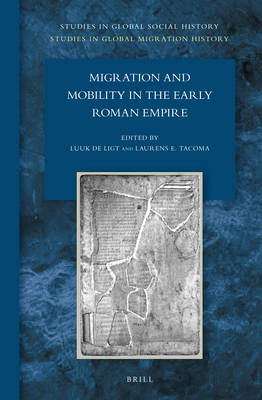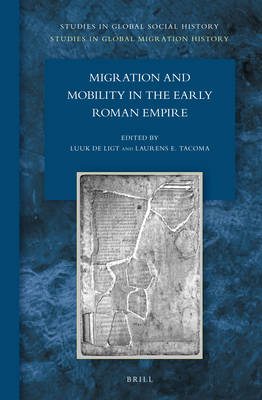
- Afhalen na 1 uur in een winkel met voorraad
- Gratis thuislevering in België vanaf € 30
- Ruim aanbod met 7 miljoen producten
- Afhalen na 1 uur in een winkel met voorraad
- Gratis thuislevering in België vanaf € 30
- Ruim aanbod met 7 miljoen producten
Zoeken
Migration and Mobility in the Early Roman Empire
€ 351,45
+ 702 punten
Omschrijving
Until recently migration did not occupy a prominent place on the agenda of students of Roman history. Various types of movement in the Roman world were studied, but not under the heading of migration and mobility. Migration and Mobility in the Early Roman Empire starts from the assumption that state-organised, forced and voluntary mobility and migration were intertwined and should be studied together. The papers assembled in the book tap into the remarkably large reservoir of archaeological and textual sources concerning various types of movement during the Roman Principate. The most important themes covered are rural-urban migration, labour mobility, relationships between forced and voluntary mobility, state-organised movements of military units, and familial and female mobility.
Contributors are: Colin Adams, Seth G. Bernard, Christer Bruun, Paul Erdkamp, Lien Foubert, Peter Garnsey, Saskia Hin, Claire Holleran, Tatiana Ivleva, Luuk de Ligt, Elio Lo Cascio, Tracy L. Prowse, Saskia T. Roselaar, Laurens E. Tacoma, Rolf A. Tybout, Greg Woolf, and Andrea Zerbini.
Contributors are: Colin Adams, Seth G. Bernard, Christer Bruun, Paul Erdkamp, Lien Foubert, Peter Garnsey, Saskia Hin, Claire Holleran, Tatiana Ivleva, Luuk de Ligt, Elio Lo Cascio, Tracy L. Prowse, Saskia T. Roselaar, Laurens E. Tacoma, Rolf A. Tybout, Greg Woolf, and Andrea Zerbini.
Specificaties
Betrokkenen
- Uitgeverij:
Inhoud
- Aantal bladzijden:
- 536
- Taal:
- Engels
- Reeks:
- Reeksnummer:
- nr. 23
Eigenschappen
- Productcode (EAN):
- 9789004307360
- Verschijningsdatum:
- 11/02/2016
- Uitvoering:
- Hardcover
- Formaat:
- Genaaid
- Afmetingen:
- 155 mm x 236 mm
- Gewicht:
- 861 g

Alleen bij Standaard Boekhandel
+ 702 punten op je klantenkaart van Standaard Boekhandel
Beoordelingen
We publiceren alleen reviews die voldoen aan de voorwaarden voor reviews. Bekijk onze voorwaarden voor reviews.










